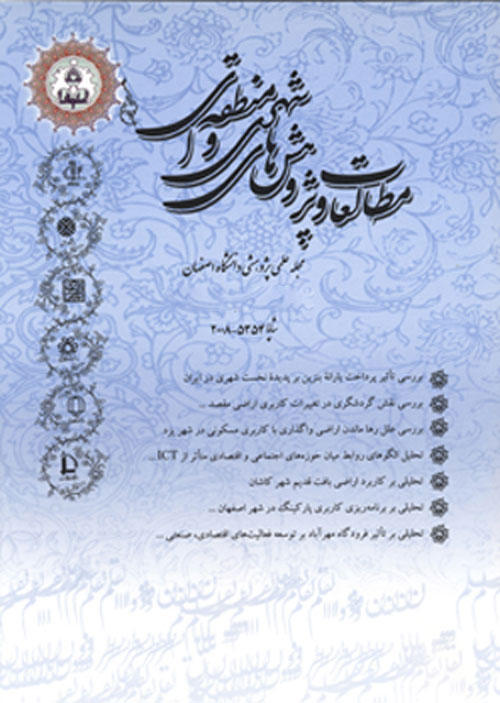Comparing aggregating methods for constructing the composite index of regional development
Author(s):
Abstract:
Introduction
A composite indicator refers to an index derived from some specific individual indicators for measuring the aggregated performance of a multi-dimensional issue. A major problem for constructing the composite indicator of development is the determination of an appropriate aggregating method to combine multi-dimensional development indicators into an overall index. Therefore, strongly, the usefulness of a composite indicator depends heavily on the underlying construction scheme. Construction on a composite indicator involves the definition of study scope, selection of underlying variables, data collection and preprocessing, data weighting and aggregation, and post analysis of the composite indicator derived, among which data weighting and aggregation has been an interesting but controversial topic (Esty et al. 2005). At the stage of data (weighting and) aggregation, there are two major families of operations research methods, namely data envelopment analysis (DEA) and multiple criteria decision analysis (MCDA), which have recently received much attention in composite indicator construction (Zhou and Ang 2008). While there are a large number of alternative methods for constructing composite indicator, none could be regarded as a ‘super method’ suitable for all cases. As a result, researchers have developed a large number of criteria, such as theoretical foundation, understandability, ease of use and validity, which are helpful to analysts for the selection of an appropriate method for constructing composite indicator. Zhou et al. (2006) introduced a novel criterion ‘‘information loss’’ and developed an objective measure called the Shannon-Spearman measure (SSM) for comparing aggregation methods in constructing composite indicator. This research investigates the effectiveness of the Shannon-Spearman measure (Zhou and Ang, 2009) and compares several popular methods in constructing composite indicator. Methodology
This research aimed to compare aggregating methods for constructing the composite index of regional development. There are many criteria for comparing aggregating methods of composite indicator. Based on the information loss concept this research was used the Shannon-Spearman measure (SSM), Spearman correlation coefficient and Coefficient of Variation (CV) to compare alternative aggregation methods in constructing composite indicator. Using the proposed measure, five popular methods in constructing composite indicator (SAW, TOPSIS, revised PCA, Taxonomy and revised Optimum Deviation) are evaluated and compared through an empirical study based on information from 17 indicators of economic development for 31 Iranian provinces. To collect data, census of 20011 and yearbook in different time was used. Discussion
Since different sub-indicators are likely to have different measurement units, normalization is usually done before data aggregation. Weight of individual indicators exploited from Antropy-Shanon and PCA techniques. The five aggregations methods are applied to the 31 Iranian provinces based on 17 individual economic indicators. Results demonstrated that different aggregation methods tend to give different composite indicator and even different ranking orders. However Tehran, Khozestan, Esfahan and Razavi Khorasan are considered by almost most the aggregation methods as better performers in economic development. Moreover North and South Khorasan, Sistan and Baluchestan, Lorestan, Ardabil and Chaharmahal Bakhtiari are ranked in least position by almost most the aggregation methods. We shall apply the Shannon-Spearman measure to evaluate the five alternative methods in constructing composite indicator in a more comprehensive way. Results of calculated the Shannon-Spearman measure revealed that TOPSIS method has the smallest value while the Taxonomy and Optimum Deviation method have the largest the Shannon-Spearman measure value. This indicates that the TOPSIS method is the most appropriate with regards to the information loss criterion. In contrast, the Taxonomy and Optimum Deviation method may not be a good choice because it often results in the maximum loss of information. It is also found that except TOPSIS, other four methods are highly correlated with each other. This indicates that different methods are complementary to each other. Based on information from five composite indicator development level of province were classified through cluster analysis. The spatial pattern is divided into six clusters: Tehran (cluster 1-1), Khozestan (cluster 1-2), Esfahan (cluster 2-1) and other province (cluster 2-2). Recent cluster include two sub-clusters sub-cluster (2-2-1) contain 10 provinces and sub-cluster (2-2-2) contain 18 provinces which were in low development level. These results indicate that the gap between the economic development of provinces and has been emphasized in several studies.Conclusion
In recent years, different methods have been widely explored in constructing composite indicators. A problem faced by researchers is to determine the most suitable method to apply. Zhou et al. (2006) developed an empirical criterion called the Shannon-Spearman measure for comparing alternative aggregation methods in constructing composite indicators based on the concept of information loss. This paper applies the Shannon-Spearman measure, spearman correlation coefficient and coefficient of variation (CV) to assess the effectiveness of the different method of constructing composite indicators in practice. Results demonstrates that the Shannon-Spearman measure could be an effective measure for comparing aggregation methods in constructing of composite indicators. The case studies presented show that the TOPSIS method is the most appropriate with regards to the information loss criterion. In contrast, the Taxonomy and revised Optimum Deviation method may not be a good choice because it often results in the maximum loss of information. It is also found that the different methods are complementary to each other. Some recommendations are provided include: Decentralization policy and make more attention to less developed province such Sistan and Baluchestan, Lorestan, Ardabil, Chaharmahal Bakhtiari, South Khorasn and North Khorasan. Appling Shannon-Spearman measure in different indicator and for other composite indicators methods in the future research should be considered. The application of quantitative methods more cautious should be considered and fitted with the regional facts. Future research is needed especially its sensitivity should be evaluated when the numbers of compared units are changing. Moreover it should be noted that different ranking caused from nature of individual indicator, weighing method, normalization and aggregating methods. The results of each method is complementary to other methods and simultaneously use and compare them often a better guide for the assessment of regional development. As well as other aspects of development through the use of socio-economic indicators and measures proposed in this research is recommended in future works. Finally, this research is not able to judge which method is the most appropriate since these results are obtained based on a specific decision matrix.Keywords:
Language:
Persian
Published:
Journal Urban - Regional Studies and Research, Volume:7 Issue: 27, 2016
Pages:
1 to 20
https://magiran.com/p1486374
سامانه نویسندگان
مقالات دیگری از این نویسنده (گان)
-
Assessment of the Entrepreneurial employability of fisheries students and its relationship with syllabus (Case study: Gorgan University of Agricultural Sciences and Natural Resources
Leila Talebi *, Hadis Kashiri, Mohamad Sharif Sharif Zadeh, Saeed Gorgin, Gholam Hossein Abdllah Zadeh
Journal of Utilization and Cultivation of Aquatics, -
Social Integration of Immigrants in the Enterprise Environment
*, Mohammad Sharif Sharifzadeh
Journal of Entrepreneurship Research,



